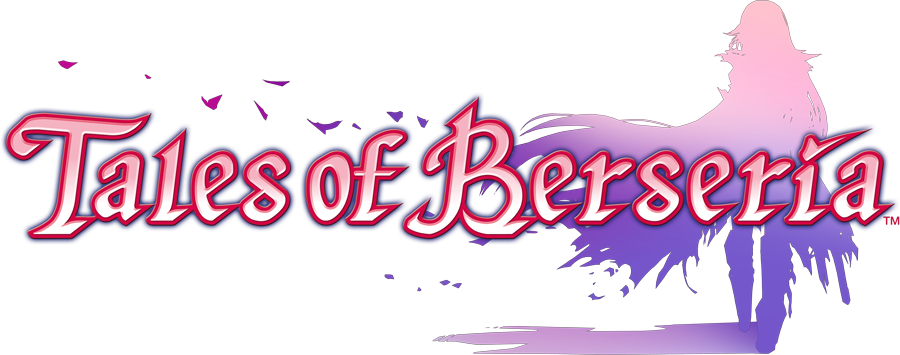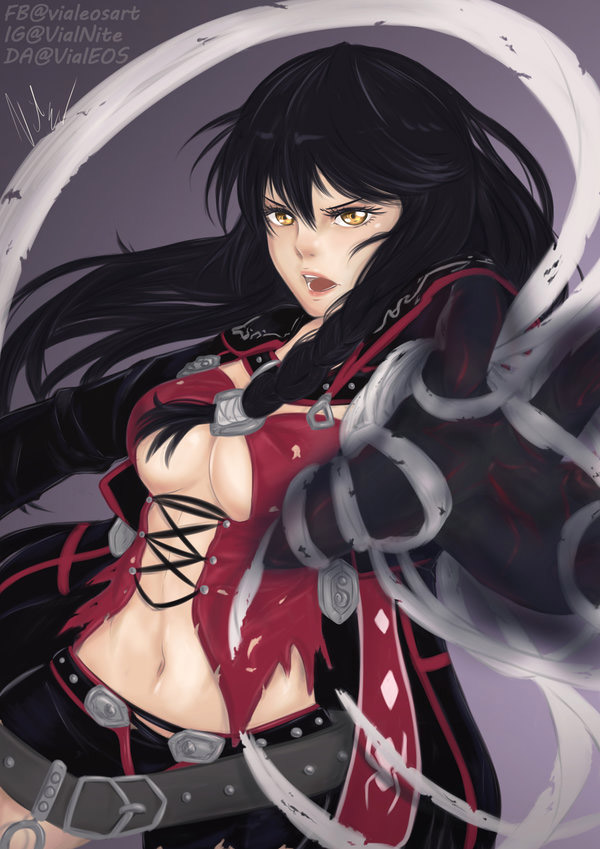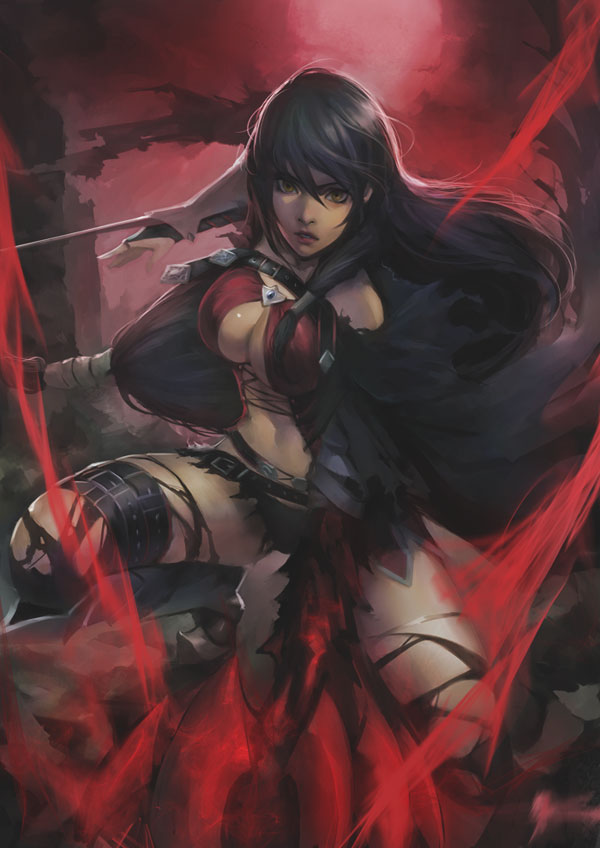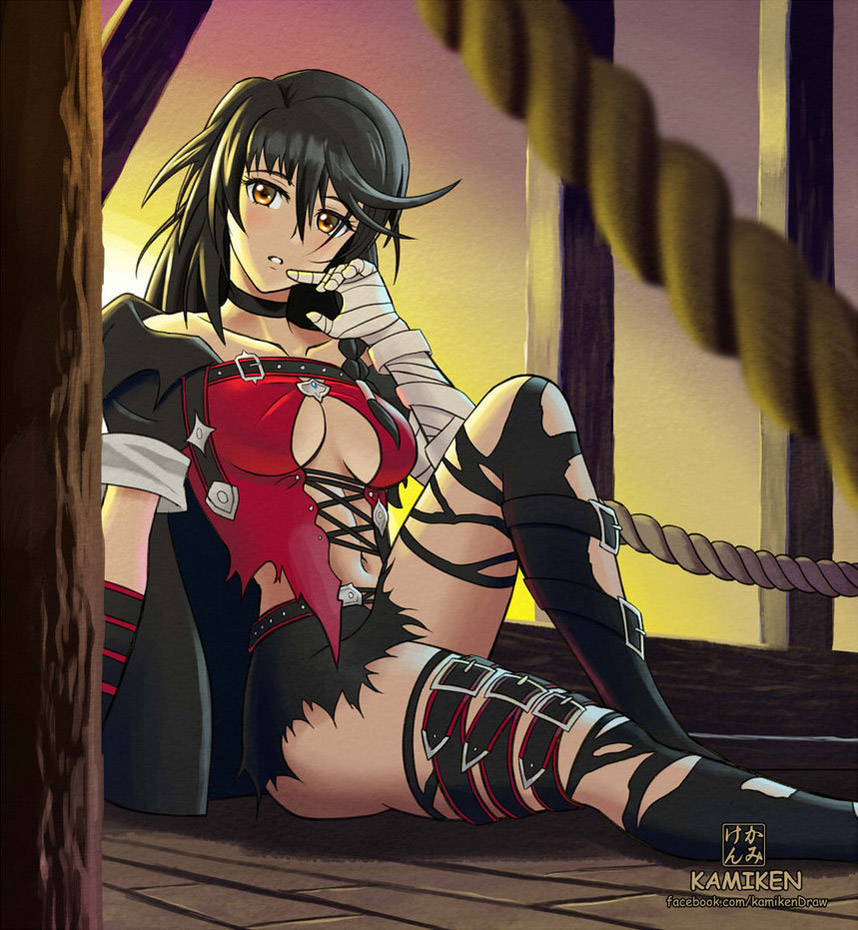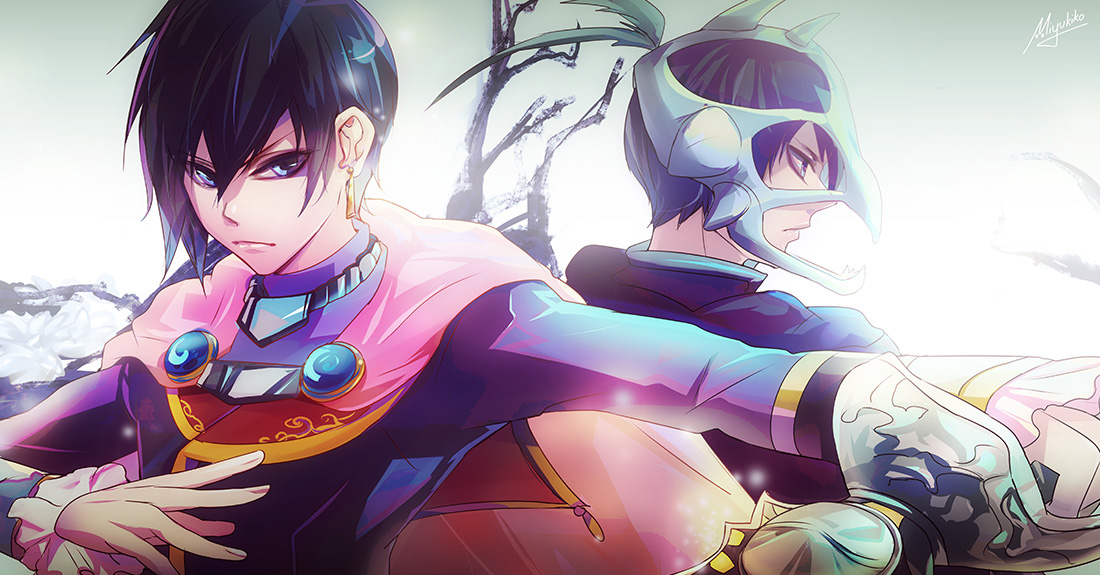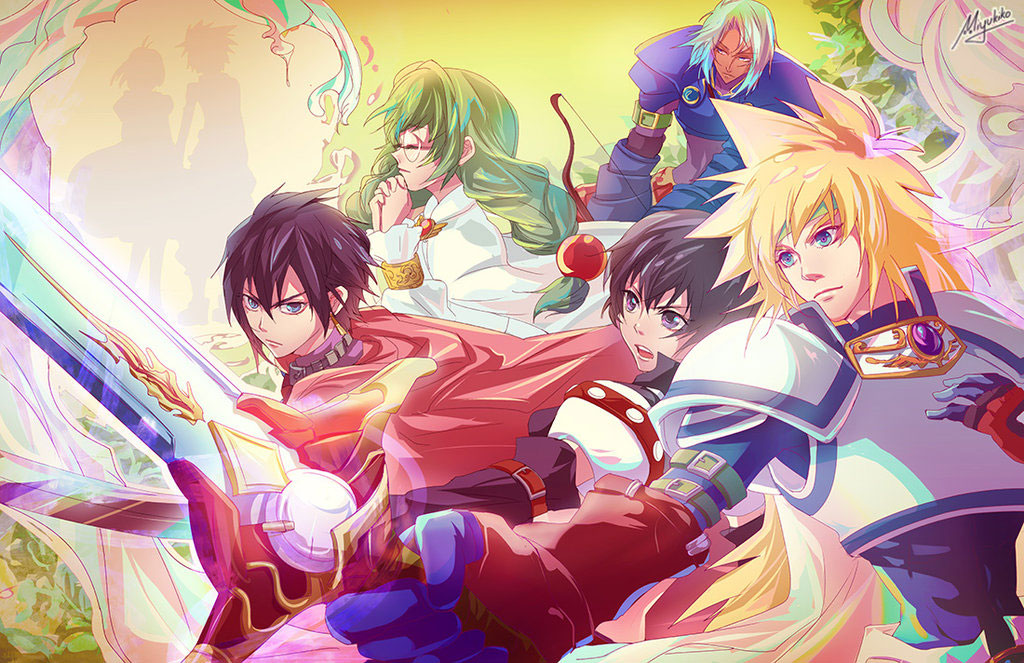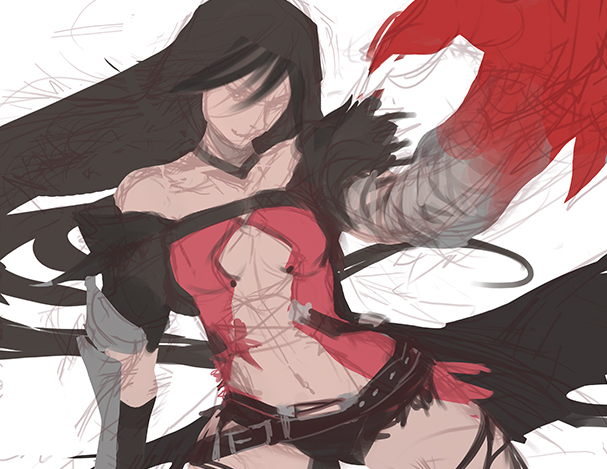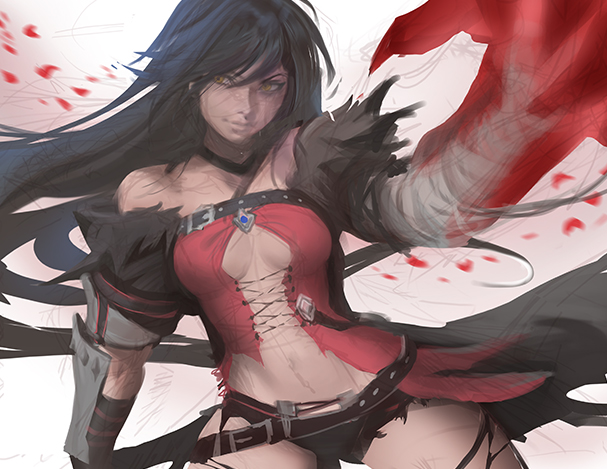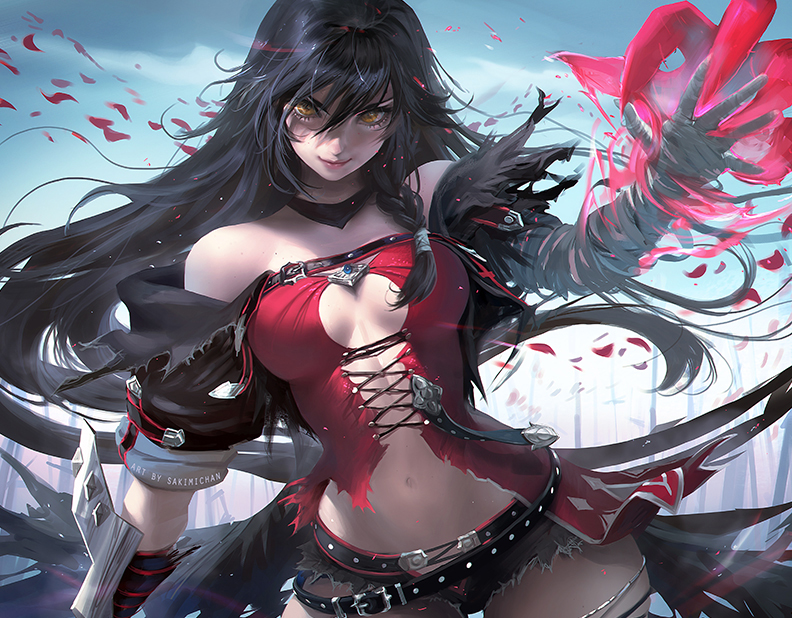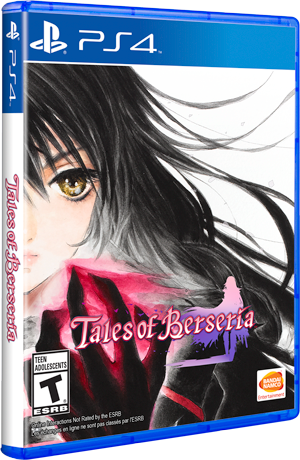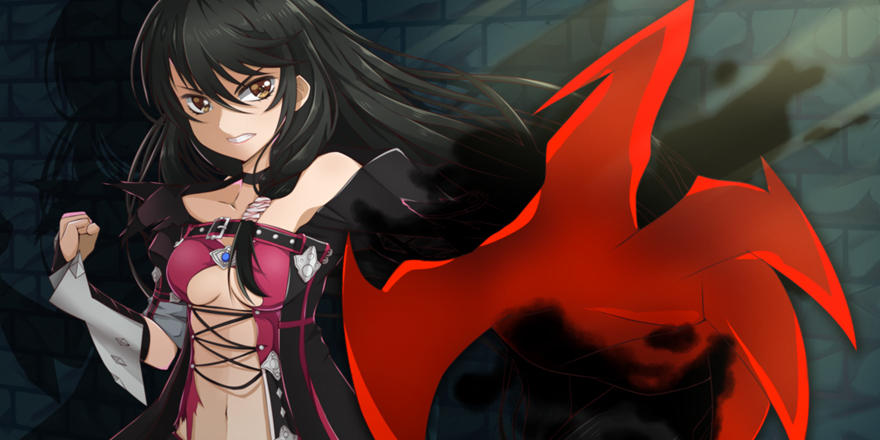 Watch Sakimichan take on BandaiNamcoUS’s #TalesofBerseria and explore the benchmarks of creating such a rich world.<da:widget wytiwyg="1" type="peeky" value="{'campaign-key':'DA-TALES-OF-BERSERIA'}" class="DA-TALES-OF-BERSERIA">
Watch Sakimichan take on BandaiNamcoUS’s #TalesofBerseria and explore the benchmarks of creating such a rich world.<da:widget wytiwyg="1" type="peeky" value="{'campaign-key':'DA-TALES-OF-BERSERIA'}" class="DA-TALES-OF-BERSERIA">There’s something truly magical about losing yourself in an engrossing narrative. It’s amazing how a story can call to the soul, or how we can sometimes feel like we know a fictional character better than the person sitting next to us. How to successfully craft a narrative capable of captivating fans has long perplexed studios and independent creators alike.
While countless have struggled to create this magical formula just once, the Tales of series has been crafting vivid, captivating worlds and characters for 20 years. Along the way, their creative team has picked up a few tricks regarding successful storytelling and applied them to each new title. Tales of Berseria, the 16th game in the main Tales of series, has been infused with hard-earned wisdom, which can be utilized by anyone who dreams of spinning their own tales about worlds and characters all their own.
Justice, Passion, and Vengeance: A theme to guide the narrative
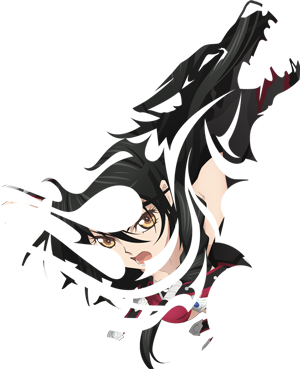
Many a creator finds that their stories grow in the telling, becoming far larger and more complicated than intended. One way to avoid this bloat is to limit the number of narrative points within a story, ensuring every subplot and side quest somehow ties back into one of the central themes. Making use of recurring themes has the additional benefit of helping fans feel comfortable in a sequel or spinoff world by providing them with something familiar, even as they embark on an adventure in a new setting.
In order to craft a clear and focused narrative, each Tales of game begins with one central theme, which becomes the central pillar for that title, with plot and characters all growing from this idea. Each theme is decided upon by the game’s producer before any work begins, with inspiration drawn from current events and the global climate.
Originally, Tales of games tended to revolve around a theme of justice or faith, but bold new steps were taken when Tales of Zestiria decided upon a theme of passion. Tales of Berseria has deviated even further from tradition by crafting a story around the theme of vengeance. The game’s protagonist, Velvet Crowe, is a cursed young woman who must defy the alleged holy order of her world and seek to avenge her family, all while desperately trying to cling to what remains of her humanity.
“ The game’s protagonist, Velvet Crowe, is a cursed young woman who must defy the alleged holy order of her world and seek to avenge her family, all while desperately trying to cling to what remains of her humanity. ”
The main story of each game is supplemented by secondary subjects, topics which help expand the story and add a bit of variety and spice to the narrative. The struggle for peaceful coexistence between several races is a central theme in all of the Tales of games, and it appears once again in Tales of Berseria. The world of Berseria is one of turmoil. Humans are being infected by the Daemonblight, a mysterious sickness which causes both mankind and beasts to lose their minds, transforming them into savage, violent monsters. A group of humans, known as the Exorcists, have made it their mission to purge the land of these infected beings. In their quest, the Exorcists have enslaved a magical race of spirits, known as the Malakim, stripping them of all sense of self and using them as tools in their quest to purify the land. With forces powerful enough to start a holy war at play, one has to wonder… are the motives of the Exorcists truly as pure and noble as they would have humanity believe?
Soulcrafting: Creating characters with depth, breadth and personality
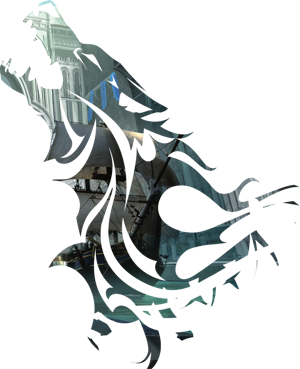
Because the Tales of games take a story-first approach, characters are not designed until after the narrative has been completed. With the personality and overall plan for each character solidified, concept artists set to work, bringing the faces of the newest heroes and villains of the Tales of universe to life. While creating their designs, concept artists are encouraged to play, explore, and push their limits in order to create unique and interesting characters whose appearance both reflects and highlights the essence of each personality.
The Tales of games have featured a wide variety of party members, male and female, human and inhuman, but until Tales of Xillia, all the protagonists had one thing in common: they were male. Tales of Xillia took a different approach, creating two lead characters: one male and one female. Milla Maxwell proved a very popular hero, and her success helped set the stage for Velvet Crowe, the first solo female protagonist in the Tales of universe.
Velvet and Milla may share the title of leading lady, but their similarities end there. Milla stood as a shining example of the typical Tales of protagonist: a swordbearer dressed in light colors, dedicated to protecting the world above all else. Velvet stands in stark contrast, shrouding herself in tatters of black and red, lashing out against her enemies with a fast, furious fighting style. She uses a combination of a lance and her crimson claw, the horrific deformation of her left arm, the first step of her transformation caused by the Daemonblight curse.
Passionate and driven by revenge above all else, Velvet is an unlikely Tales of protagonist. Her writers had to strike a careful balance in order to keep her a three-dimensional, relatable character. While Velvet may have a shadow over her soul, a kind heart still beats within, as revealed through her relationship with Laphicet. Despite a troubling start, Velvet comes to both love and respect the young Malak, even going so far as to name him after her departed brother. This rich dichotomy helps highlight the hardened-yet-still-human soul Velvet hides.
Character Interactions: The banter that binds
Creating complex, believable, relatable characters can be a challenge, and while it may feel counterintuitive, this process is often made easier by the addition of more characters. Velvet’s portrayal as a character with a shadow cast over her is made successful due to the bright souls of her companions. Protagonists who are standoffish or mostly silent often require a host of strong and verbose teammates in order to give fans insight into their thoughts and motivations.
Discontented with the tradition of relegating character interactions to cutscenes, the Tales of games allowed their characters to converse during battle, after battles, and even pioneered the “skit system” to provide their characters even more opportunities to chat. Skits play out independent of the main plot, and in Tales of Berseria, are composed of everything from deep discussion about the Daemonblight to intense debates about the all-important question: Which are better -- cats or dogs?
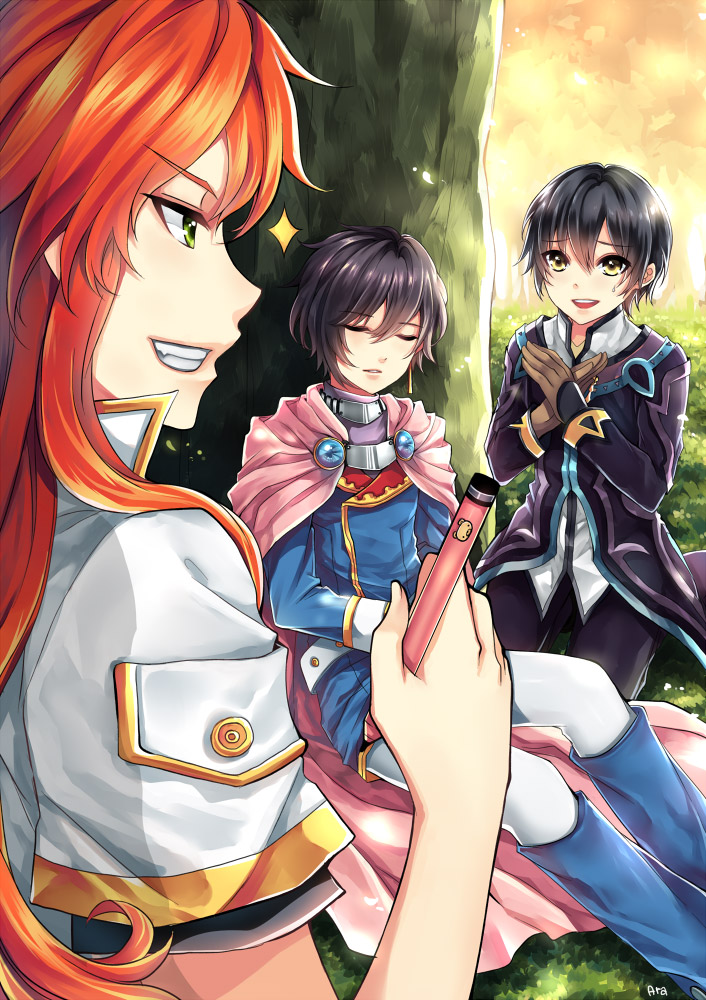
The Tales of series takes advantage of every moment possible to enable character interaction, including on the battlefield. Within this high-pressure environment, characters express concern for teammates who takes a particularly hard blows and thank friends who heal them. If characters have a strong-enough bond, players will occasionally be treated to a brief interaction between friends after a fight. In Tales of Berseria, this most often manifests as Velvet expressing concern over Laphicet after a harsh encounter.
Finding creative ways to allow fans to enjoy character interactions without hindering the progression of the story can be a challenge, but it is also incredibly rewarding. Surprising fans with charming, silly, or insightful conversations at unexpected times can help create a sense of camaraderie and dimensions to your characters.
The potent combination of story, character, and teamwork have helped the Tales of series craft many successful narratives over the years. With these tools in mind, how will you craft your next story?
From DeviantArt Artists
How do you stay disciplined as a professional artist?
“Oh man, that’s a great question. Right now I’m more of a freelancer, and it’s very hard for a freelancer to keep up with a schedule. I do have a schedule now. I’ve learned from past experiences of sleeping at whatever hour I want, which to be honest, sounds great, but it’s not a great thing long term. It messes up with your head and your health as well. So definitely, I would recommend just sticking to having regular work hours.”
Where did your nickname, Sakimichan, come from?
“I have no idea… I was super into anime, so I wanted to make a Japanese inspired name. It was pretty random. I just came up with it - I had it on my Neopet account, so I just transferred it on my DeviantArt when I joined.”
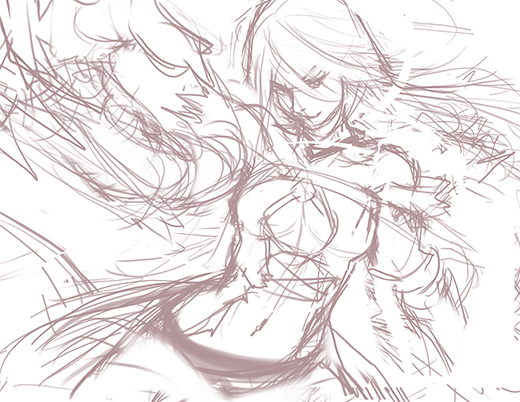
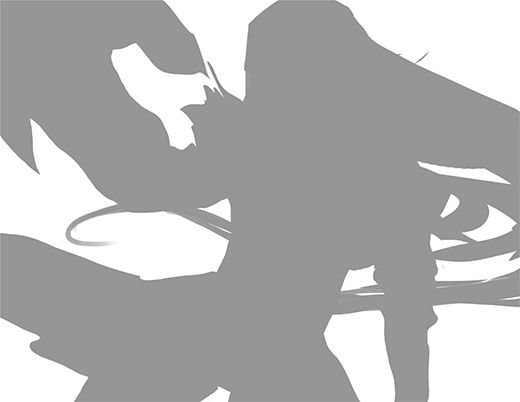
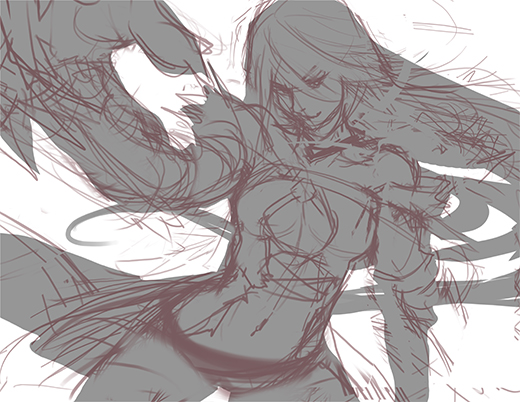
How do you deal with art block?
“We artists, we all have our blocks. For me, there’s been times, but I guess I’m just the type of person that is a bit more positive. I get really sad sometimes when I can’t come up with an idea, but that doesn’t last too long for me. If I had any tips for those of you that do have art blocks and have trouble overcoming them, try to take a break, play some video games, hang out with friends, watch movies for inspiration. Sometimes, if I feel art block, I will just keep drawing until, well, I wouldn’t sleep, I’d just draw until I feel like ‘okay, I’ve got something here, I can work with that’. It’s like I’m trying to find new techniques.”
How do you know when you’re done with a piece?
“It’s a very complicated thing for me because I’m very picky and I usually spend more time refining it towards the end than the start. The start can be a lot faster. In the first three hours I would get maybe eighty percent done. And then I will spend ten hours after for the small details. It depends on if you’re a picky artist or if you’re not that picky.”
Do you have any tips for artists trying to learn anatomy?
“Yes, definitely. I would definitely recommend going to live drawing classes, just because I was once in a 3-D animation program. My teacher always said if you want to learn anatomy, you’ve got to observe it. So, live drawing is good. Also, anatomy books are quite good as well. If you guys go online and look up Anatomy For Artists, you guys will find so many anatomy books. To be honest, any of them are good as long as they have diagrams of anatomy that you can reference off of and practice.”
If you had to collaborate or try a different style for a day: what artist would you choose to collaborate with, or what art style would you try out for that day?
“I think as a digital artist, I would love to work with a traditional artist, have them teach me their ways, because I’ve lost connection with a traditional method. It would be great because I’ve seen some amazing Youtube videos of traditional artists and how they could work with watercolor that just blows my mind. I have no idea how they do it. And it would be really cool to collaborate with an amazing traditional artist, to have them show me their techniques.”

